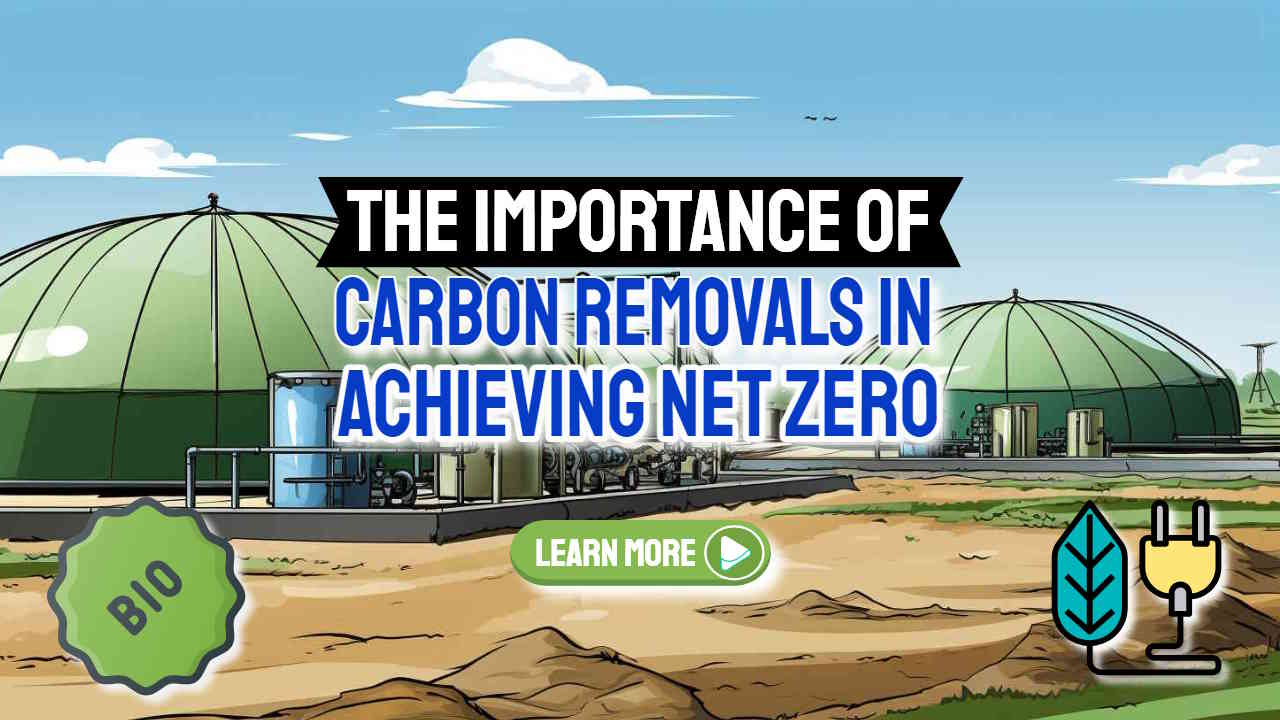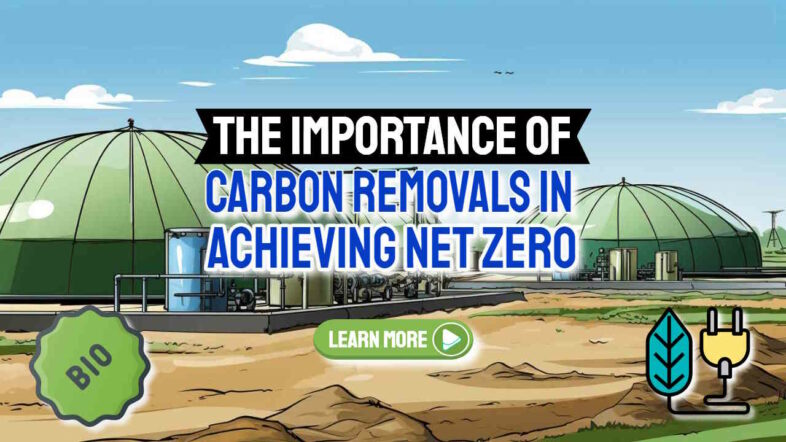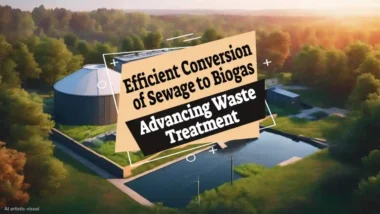Carbon removals being the opposite of carbon emissions will be a significant contributor to the effort to reduce the worst effects of climate change and global warming. While reducing emissions is crucial, it is not enough to achieve the goal of net zero by 2050. Active removal of carbon from the atmosphere is necessary.
Of all the methods of carbon removal currently being discussed today the hottest topic is Carbon capture and storage (CCS).
Carbon capture and storage (CCS) is a process that involves capturing carbon dioxide emissions from industrial processes and storing them underground, preventing them from entering the atmosphere.
CCS not only helps reduce emissions but also appears in any list of carbon removals because it actively removes carbon from the atmosphere, mitigating the effects of climate change.
The Need for Carbon Removals
To achieve net zero, the UK requires a significant proportion of removals, as shown in the graph. These removals will offset the unavoidable emissions from heavy industries.
Without removals, it is impossible to reach net zero. Currently, the UK delivers essentially no removals, but by 2050, the country will need to scale up the industry to deliver about 80 million tons of CO2 removals per year.

The Process of Carbon Removal
Carbon removals involve taking carbon dioxide from the atmosphere and storing it away from the atmosphere. One method of achieving removals is through anaerobic digestion (AD).
AD plants use biomass, such as plants, to capture atmospheric carbon. The digestion process creates biomethane and bioCO2, both derived from atmospheric carbon. Biomethane can be burned, releasing biogenic carbon back into the atmosphere.
Bioco2 can be utilized or stored in geological storage, effectively removing it from the atmosphere.
The following is a list of key technologies available for carbon removal, along with brief descriptions:
- Afforestation and Reforestation:
- Description: Planting trees in previously deforested areas or on lands where trees never existed. Trees absorb CO2 from the atmosphere, storing carbon in their biomass.
- Bioenergy with Carbon Capture and Storage (BECCS):
- Description: Growing biomass (e.g., crops or trees) for energy, and capturing and storing the CO2 produced when this biomass is burned or processed.
- Direct Air Capture (DAC):
- Description: Machines that directly absorb CO2 from the air and concentrate it for storage or utilization.
- Enhanced Weathering:
- Description: Spreading minerals, like basalt or olivine, that naturally absorb CO2 over large areas to accelerate the natural weathering process.
- Ocean Fertilization:
- Description: Adding nutrients to the ocean to promote the growth of phytoplankton, which absorbs CO2 through photosynthesis.
- Carbon Capture and Storage (CCS):
- Description: Capturing CO2 emissions at their source (e.g., power plants) and transporting and storing them underground or underwater.
- Soil Carbon Sequestration:
- Description: Agricultural practices that increase the amount of carbon stored in the soil, including crop rotation, agroforestry, the addition of biochar, and reduced tillage.
- Blue Carbon Ecosystems:
- Description: Protecting and restoring coastal ecosystems like mangroves, seagrass beds, and salt marshes which have high carbon storage potential.
- Carbon Mineralization:
- Description: Turning CO2 into solid minerals, such as calcium or magnesium carbonates, which can be stored or used in construction.
- Biochar:
- Description: Producing charcoal-like material from organic matter and adding it to the soil, increases its carbon storage capacity and enhances fertility.
These technologies offer a diverse range of options for carbon removal, each with its own advantages, challenges, and suitability depending on the context.
The Role of Anaerobic Digestion in Carbon Removals
Anaerobic Digestion plants play a crucial role in the removals pathway. By growing biomass and digesting it to produce biomethane and bioco2, AD plants can generate removals credits. These credits can be sold to offset unavoidable emissions from heavy industries, allowing them to reach net zero.
The revenue from removals credits is essential for the Anaerobic Digestion industry to become less dependent on government subsidies and fit into market-based systems.
The Market for Removals Credits
 The market for removals credits is driven by both the voluntary carbon market and the compliance market. The voluntary carbon market consists of companies with self-imposed carbon targets, willing to pay a premium for unsubsidized gas to meet their emissions targets.
The market for removals credits is driven by both the voluntary carbon market and the compliance market. The voluntary carbon market consists of companies with self-imposed carbon targets, willing to pay a premium for unsubsidized gas to meet their emissions targets.
However, oversight and accountability are necessary to prevent greenwashing. Government-backed standards and regulations are needed to ensure the integrity of removals credits.
The compliance market, such as the UK emissions trading scheme, provides a framework for meeting emissions targets and integrating biomethane and removals through AD.
Comparing Removals with Utilization
While the utilization market for biogas is currently stronger, the focus on removals is essential for the short to medium term. As CCS projects come online, there will be a high demand for removal certificates.
The utilization market may see an abundance of CO2 from various sources, reducing its value. In the long term, there will be a significant demand for removals, which can only be delivered through biogenically sourced carbon.
Both removals and utilization markets will be strong, but the short to medium-term focus is on removals.
Conclusion:
Carbon removals are crucial for achieving net zero by 2050. CCS, particularly through AD plants, plays a significant role in actively removing carbon from the atmosphere.
The market for removals credits is driven by both the voluntary carbon market and the compliance market.
Government-backed standards and regulations are necessary to ensure the integrity of removals credits.
While the utilization market is currently stronger, the focus on removals is essential for the short to medium term. In the long term, there will be a high demand for removals and biogenic carbon for utilization.
FAQ: The Importance of Carbon Removals in Achieving Net Zero
1. What does “Net Zero” mean?
Net Zero refers to a balance between the amount of greenhouse gas emissions produced and the amount removed from the atmosphere. Achieving Net Zero means that a country, company, or individual is effectively emitting no greenhouse gases because they are offsetting or removing equivalent amounts.
2. Why is carbon removal important for achieving Net Zero?
While reducing emissions is vital, there are some sectors and processes where emissions are hard to eliminate entirely. Carbon removal technologies can capture and store these unavoidable emissions, ensuring we can still achieve a Net Zero balance.
3. Are carbon removal and carbon capture the same?
No, while they are related, they serve different purposes. Carbon capture typically refers to capturing CO2 emissions at their source, like power plants, before they enter the atmosphere. Carbon removal, on the other hand, involves taking CO2 out of the atmosphere after it has been emitted.
4. What are some examples of carbon removal technologies?
There are various technologies and methods, such as Direct Air Capture (DAC), Bioenergy with Carbon Capture and Storage (BECCS), afforestation, soil carbon sequestration, and ocean fertilization, to name a few.
5. How close are we to achieving widespread use of carbon removal technologies?
Many carbon removal technologies are in their infancy or are being pilot tested. However, they are rapidly advancing, and with increased investment and research, they can become scalable solutions to help achieve Net Zero.
6. Is achieving Net Zero only about carbon removal?
No. Achieving Net Zero requires a multi-faceted approach. While carbon removal plays a significant role, it must be paired with aggressive emissions reductions, energy efficiency measures, and a shift to renewable energy sources.
7. Are natural solutions like planting trees sufficient for carbon removal?
While natural solutions, such as afforestation and reforestation, are crucial components of carbon removal, relying solely on them may not be sufficient to achieve Net Zero due to the vast amounts of current emissions. A combination of natural and technological solutions is necessary.
8. How can individuals support or contribute to carbon removal efforts?
Individuals can support reforestation projects, invest in or donate to organizations advancing carbon removal technologies, reduce their carbon footprint, and advocate for policies that support research and deployment of carbon removal methods.
9. Are there any downsides or risks associated with carbon removal technologies?
Like any technology, there can be risks or unintended consequences. For example, large-scale BECCS could compete with land for food production. It’s essential to carefully assess and manage these technologies as they are developed and deployed.
10. How does carbon removal complement other climate change mitigation strategies?
Carbon removal addresses the emissions we can’t avoid and complements other strategies like transitioning to renewables, increasing energy efficiency, and conserving natural habitats. Together, these strategies provide a comprehensive approach to combatting climate change.
This FAQ was created to address common questions about the importance of carbon removals in the journey to Net Zero. But, we may be wrong, so always consult expert sources and studies for in-depth understanding and the latest developments in this field.
Efficient Conversion of Sewage to Biogas: Advancing Waste Treatment for Sustainable Energy Generation
Read on to learn about advancing foul waste treatment, for sustainable energy generation through the efficient conversion of sewage solids to biogas. When we talk about waste, it can seem like a dirty subject. But what if we could turn that waste into something useful? Imagine the mucky water and sludge from our toilets and […]
US Falling Short on Methane Emissions Reduction Commitments from Landfills: Report
The United States is failing to uphold its commitment to reducing methane emissions from landfills, a promise it made at the Glasgow 2022 Climate Change Conference, according to a new study. The United Nations Framework Convention on Climate Change (UNFCCC) has identified this issue as an easily achievable solution for mitigating climate change within the […]
UK Begins Fightback Against Plastic Pollution: Dramatic 2040 Deadline Set for a Cleaner Future
The UK government has signed a Ministerial Statement calling for an ambitious global plastic pollution treaty to tackle plastic pollution and protect the marine environment. A plastic pollution treaty is sought for: including a reduction in single-use plastics, the improvement of waste management and recycling systems, and the promotion of sustainable and circular economy models. […]
Cutting Methane Emissions: Key to Avoiding Climate Tipping Points
Recent studies have shown that cutting methane emissions is crucial in limiting global warming to the internationally agreed goal of 1.5-2 degrees Celsius. This is because methane is a potent greenhouse gas that is estimated to be 28 to 85 times more powerful than carbon dioxide in terms of trapping heat in the Earth’s atmosphere. […]








